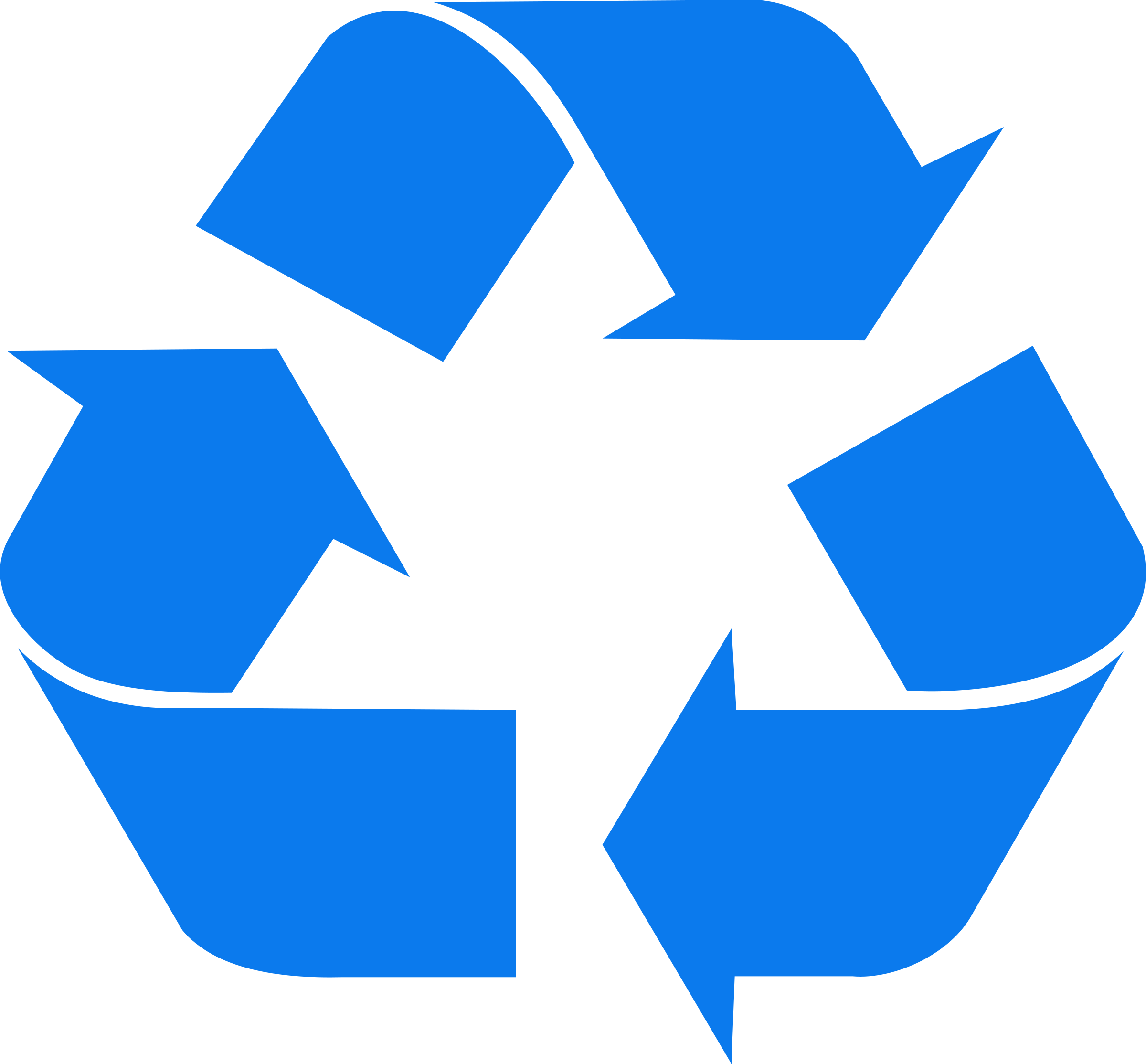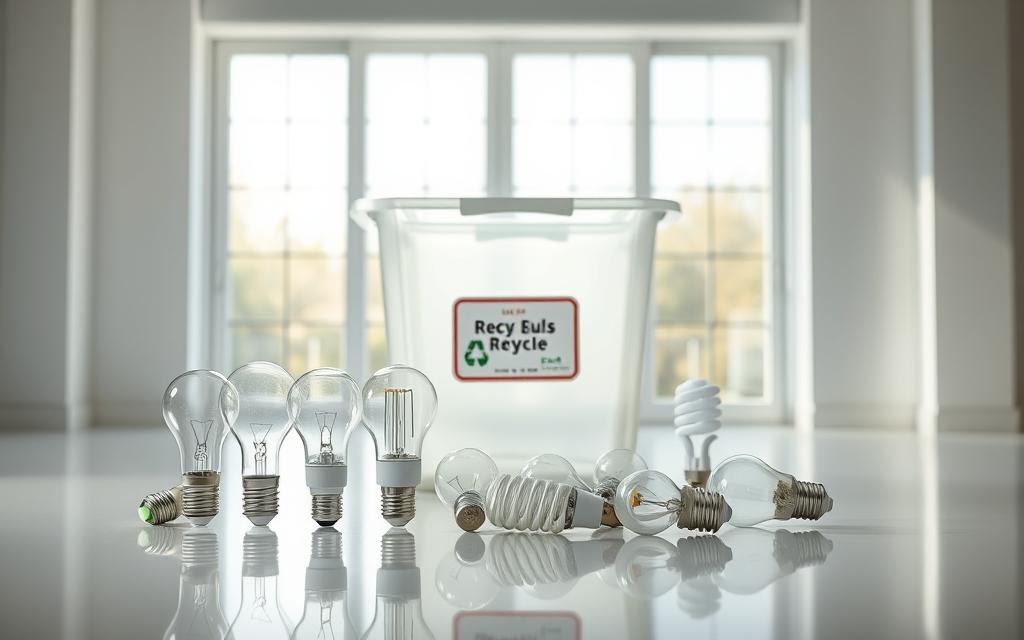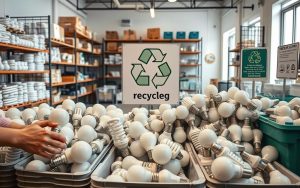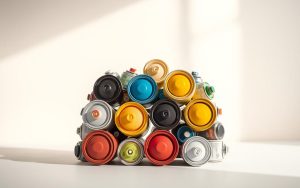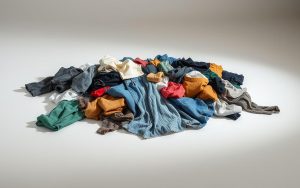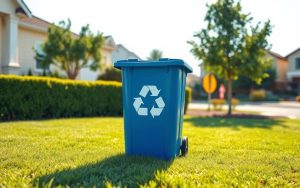Proper disposal of light bulbs is essential for both safety and the environment. Many bulbs, especially CFLs and fluorescents, contain mercury, which can pose serious health risks if not handled correctly. Broken glass and mercury exposure are key concerns when disposing of these items.
In states like California, there are legal mandates for recycling certain types of bulbs. Retailers such as Home Depot and Lowe’s offer convenient recycling programs, making it easier for households to dispose of bulbs responsibly. However, confusion often arises about which bulbs can be recycled and which can be safely trashed.
Regional disposal methods vary, so it’s important to check local guidelines. The EPA provides clear instructions for safe handling and recycling, ensuring minimal impact on the environment. Understanding these practices helps protect both people and the planet.
Why Should You Recycle or Dispose of Light Bulbs Properly?
Improper bulb disposal can harm the environment and human safety. Many bulbs, such as CFLs and fluorescents, contain mercury, a toxic substance that can seep into groundwater and damage ecosystems. When these bulbs are tossed in the trash, they often end up in landfills, where mercury and other toxins like lead arsenic can leach into water supplies.
Broken bulbs pose immediate risks. Shattered glass can cause injuries, and mercury vapor released from broken CFLs can be harmful if inhaled. The Environmental Protection Agency (EPA) provides strict cleanup protocols to minimize exposure to these hazards.
Environmental Impact of Improper Disposal
Mercury from improperly discarded bulbs contaminates soil and water, threatening wildlife and human health. Over time, toxins accumulate in the food chain, leading to long-term ecological damage. Recycling prevents these harmful substances from entering landfills and polluting the environment.
Safety Concerns with Broken Bulbs
Handling broken bulbs requires caution. Mercury vapor can be dangerous, especially in poorly ventilated spaces. The EPA recommends opening windows, using gloves, and carefully sealing broken pieces in a container to avoid exposure.
Legal Requirements for Recycling
Several states, including California, Massachusetts, and Vermont, have laws mandating the recycling of mercury-containing bulbs. Non-compliance can result in fines, emphasizing the importance of following proper disposal practices. These regulations aim to protect both public health and the environment.
How to Prepare Light Bulbs for Disposal
Preparing bulbs for disposal requires careful steps to ensure safety and environmental protection. Proper handling prevents hazards like broken glass and exposure to harmful substances. Following these tips ensures a smooth and responsible process.
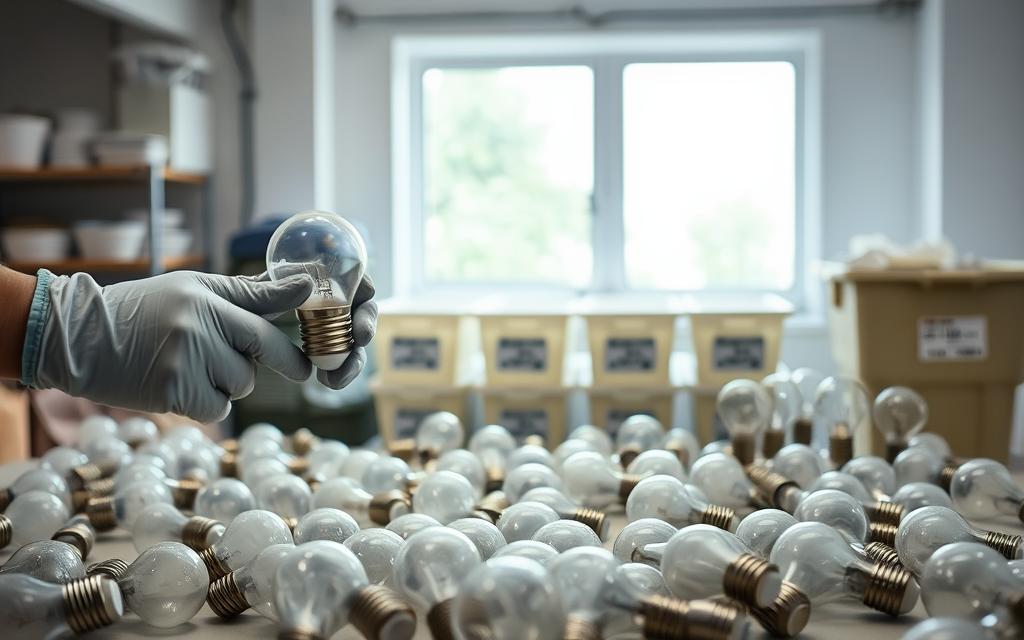
Safe Handling Techniques
Always turn off the power before removing bulbs. Use a towel or cloth to catch any debris. Wear gloves to protect hands from sharp edges or contaminants. For mercury-containing bulbs, seal them in a plastic bag to prevent leaks.
Packaging Tips for Recycling
When mailing recyclables, use padded boxes to protect bulbs. Place each bulb in a plastic bag to contain any breakage. Label packages clearly if they contain hazardous materials. Retailers like Home Depot often require specific packaging for their free CFL recycling programs.
Cleaning Up Broken Bulbs
Broken bulbs require immediate attention. Ventilate the room to disperse any harmful vapors. Avoid using a vacuum, as it can spread contaminants. Instead, use damp paper towels to collect glass fragments. Seal all debris in a bag and dispose of it according to local guidelines.
| Bulb Type | Preparation Method | Disposal Option |
|---|---|---|
| CFL | Seal in plastic bag | Retailer recycling |
| Incandescent | Wrap in newsprint | Regular trash |
| LED | Use padded box | Recycling center |
Where to Dispose of Light Bulbs
Finding the right place to dispose of old bulbs ensures safety and environmental protection. Various options are available, from local recycling centers to retailer programs. Each method has specific guidelines to follow for proper handling.
Local Recycling Centers
Many communities have dedicated recycling centers that accept specific types of bulbs. Tools like Earth911’s search feature or the EPA’s directory can help locate certified facilities in your area. These centers often handle hazardous materials, ensuring safe collection and processing.
Retailer Recycling Programs
Major retailers like Home Depot, Lowe’s, and Batteries Plus offer convenient recycling programs. These services are ideal for CFLs and LEDs, but some locations may not accept fluorescent tubes. Checking with the store beforehand ensures compliance with their guidelines.
Municipal Hazardous Waste Facilities
Municipal facilities provide another reliable option for bulb disposal. Many cities schedule annual or bi-annual collection events for hazardous waste. While some may charge fees, these services ensure proper handling of materials that cannot be disposed of through regular trash or retailer programs.
How to Dispose of Incandescent Light Bulbs
Incandescent bulbs are commonly found in households but require specific disposal methods. Unlike other types, these bulbs do not contain hazardous materials like mercury, making them easier to handle. However, proper steps ensure safety and environmental responsibility.
Throwing Away Incandescent Bulbs
Most municipalities allow incandescent bulbs to be placed in regular trash. Wrap broken pieces in newspaper or paper towels to prevent injuries. This method is straightforward and widely accepted due to the low recyclability of these bulbs.
Upcycling Incandescent Bulbs
For a creative twist, consider upcycling old incandescent bulbs. Ideas include turning them into holiday decorations, mini terrariums, or oil lamps. Before crafting, use pliers to remove the metal base for safety. Avoid donating broken bulbs to thrift stores, as they pose risks.
Switching to energy-efficient options like LEDs is recommended by ENERGY STAR. This not only reduces waste but also lowers household energy consumption. Proper disposal and upcycling ensure these bulbs are handled responsibly.
How to Dispose of Halogen Bulbs
Halogen bulbs require specific handling to ensure safe and eco-friendly disposal. Unlike CFLs, they do not contain mercury, but their thicker glass and halogen gas composition still demand careful attention. Proper methods prevent breakage and reduce landfill bulk.
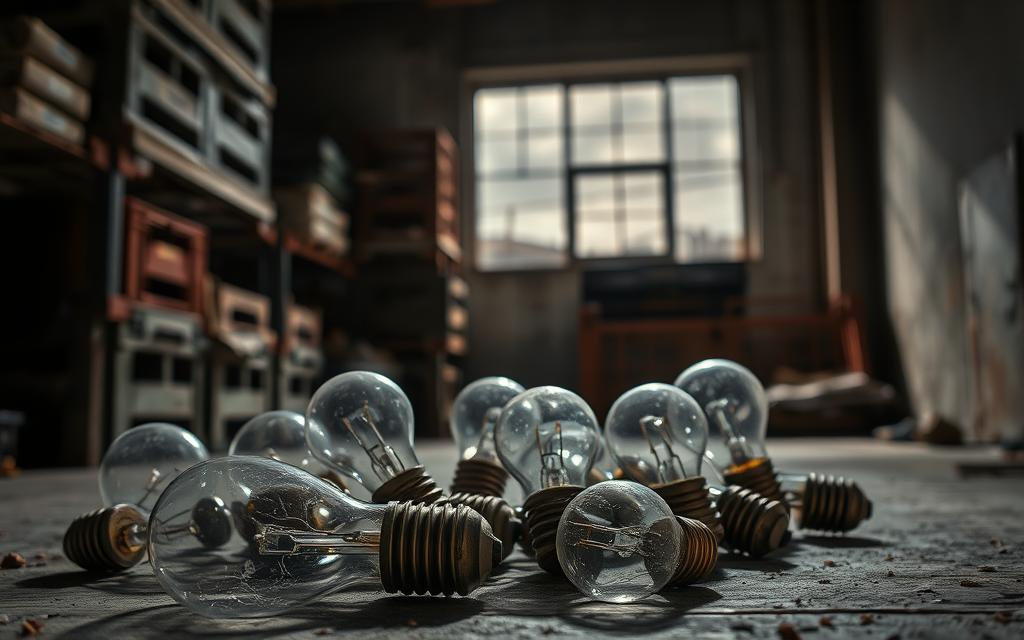
Safe Disposal Methods
When disposing of halogen bulbs, use their original packaging to minimize breakage. If the packaging is unavailable, wrap them in newspaper or place them in a sturdy box. Double-bagging can provide extra protection if local recycling options are limited.
Recycling Options for Halogen Bulbs
While many municipalities allow halogen bulbs in regular trash, recycling is a more sustainable choice. Specialty recyclers like Batteries Plus accept these items, ensuring proper processing. Switching to energy-efficient LEDs not only reduces waste but also lowers energy costs over time.
How to Dispose of CFL Bulbs
CFL bulbs require special attention during disposal due to their mercury content. Each bulb contains about 4 milligrams of mercury, a toxic substance that can contaminate groundwater and harm ecosystems. Proper recycling ensures this hazardous material is safely managed.
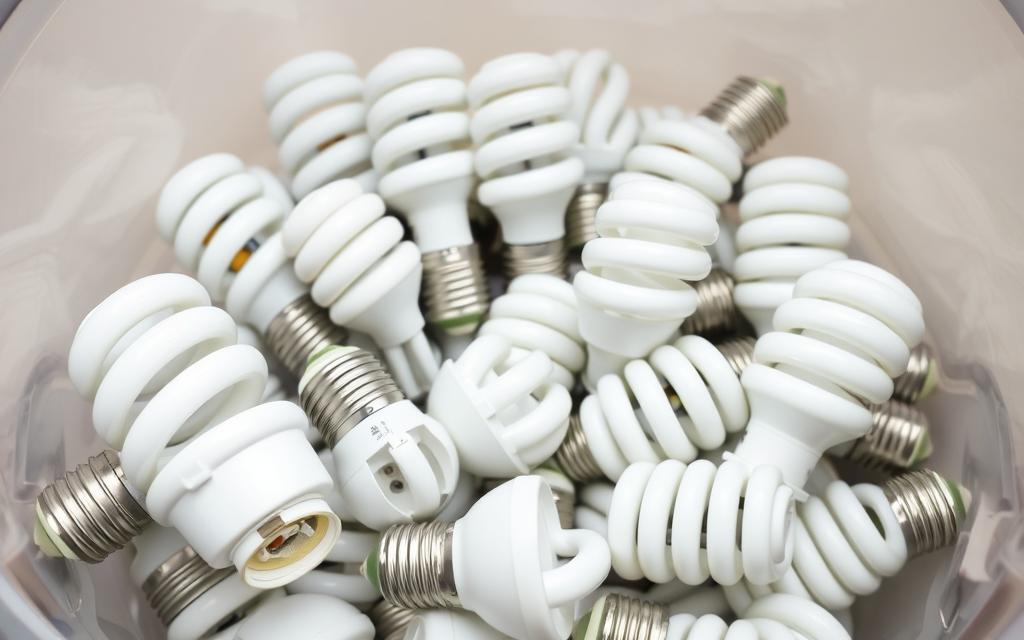
Why CFL Bulbs Should Be Recycled
Mercury in CFL bulbs poses significant risks to both the environment and human health. When improperly discarded, it can seep into soil and water, affecting wildlife and drinking supplies. The Environmental Protection Agency emphasizes recycling to prevent these dangers.
Groundwater contamination is a major concern. Even small amounts of mercury can accumulate in the food chain, leading to long-term ecological damage. Recycling programs ensure this toxic material is safely processed and kept out of landfills.
Retailers Accepting CFL Bulbs
Many retailers offer free recycling programs for CFL bulbs. Home Depot, Lowe’s, and True Value are among the top options. These programs make it easy for households to dispose of bulbs responsibly.
| Retailer | Acceptance Policy |
|---|---|
| Home Depot | Accepts intact CFL bulbs |
| Lowe’s | Offers free recycling bins |
| True Value | Accepts CFLs at select locations |
Handling Broken CFL Bulbs
If a CFL bulb breaks, immediate action is necessary. The Environmental Protection Agency recommends ventilating the room for at least 15 minutes before cleanup. Avoid using a vacuum, as it can spread mercury vapor.
Wear gloves and use damp paper towels to collect broken pieces. Place all debris in an airtight container, such as a glass jar, and dispose of it according to local guidelines. Proper cleanup minimizes exposure to harmful substances.
How to Dispose of LED Bulbs
LED bulbs are a popular choice for energy efficiency, but their disposal requires attention. While they last longer and consume less power, improper handling can lead to environmental harm. These bulbs contain trace amounts of heavy metals like lead arsenic, which can contaminate landfills if not managed properly.

Recycling LED Bulbs
Recycling is the safest way to dispose of LED bulbs. Many retailers, including Home Depot and Best Buy, offer free recycling programs. These services ensure that heavy metals are safely extracted and reused, preventing them from polluting soil and water.
According to 2023 EPA statistics, LED recycling rates have improved significantly. Certified recyclers process these bulbs to recover valuable materials while minimizing environmental impact. In states like New York and New Jersey, trashing LEDs is illegal due to e-waste laws, making recycling the only viable option.
Environmental Benefits of LED Recycling
Recycling LED bulbs offers numerous environmental benefits. It reduces landfill waste and prevents heavy metals from leaching into ecosystems. Additionally, the process conserves resources by recovering materials like glass and aluminum for reuse.
Switching to LEDs already saves up to 75% in energy compared to incandescent bulbs. Proper disposal ensures these savings are not offset by environmental damage. By recycling, households contribute to a cleaner, safer planet.
| Retailer | Recycling Policy |
|---|---|
| Home Depot | Accepts LED bulbs at all locations |
| Best Buy | Offers free recycling for household LEDs |
| Lowe’s | Provides recycling bins for LEDs |
How to Dispose of Fluorescent Tubes
Fluorescent tubes demand careful handling due to their hazardous components. These items contain 10-50 milligrams of mercury, significantly more than the 4 milligrams found in CFLs. Improper disposal can lead to environmental contamination and health risks.
Special Recycling Protocols
Fluorescent tubes are banned from curbside pickup in most areas. Instead, they must be taken to hazardous waste facilities or certified recycling centers. Universal Waste rules apply, ensuring safe handling and processing of these materials.
Certified facilities often use tube-crushing machines to extract mercury and other components for reuse. For cracked tubes, epoxy glue can temporarily seal them before transport. Always check local guidelines for specific services and requirements.
LightRecycle.org is a valuable resource for locating nearby recycling options. Major retailers like IKEA exclude fluorescent tubes from their programs, so alternative facilities are essential.
Handling Broken Fluorescent Tubes
Broken fluorescent tubes require immediate attention. Mercury vapor can be harmful if inhaled, so ventilate the area before cleanup. Avoid using a vacuum, as it can spread contaminants.
Wear gloves and use damp paper towels to collect broken pieces. Place all debris in an airtight container, such as a glass jar, and dispose of it according to local guidelines. Proper cleanup minimizes exposure to harmful substances.
| Resource | Details |
|---|---|
| LightRecycle.org | Locate certified recyclers |
| Hazardous Waste Facilities | Accept fluorescent tubes |
| Epoxy Glue | Seal cracked tubes for transport |
Conclusion
Properly handling old light bulbs is a simple yet impactful way to protect the environment. Each bulb type, from incandescent to fluorescent, has specific disposal guidelines. Checking local resources like Earth911 or municipal sites ensures compliance with regional rules.
Bookmarking the EPA’s recycling directory makes finding certified facilities easier. For future purchases, ENERGY STAR-certified LEDs are a sustainable choice. Retailers like Home Depot’s EcoSmart line also offer eco-friendly options.
Remember, one recycled bulb can protect up to 30,000 gallons of water. Taking these small steps at home contributes to a healthier planet. For more details on recycling programs, visit Recycle Technologies.
